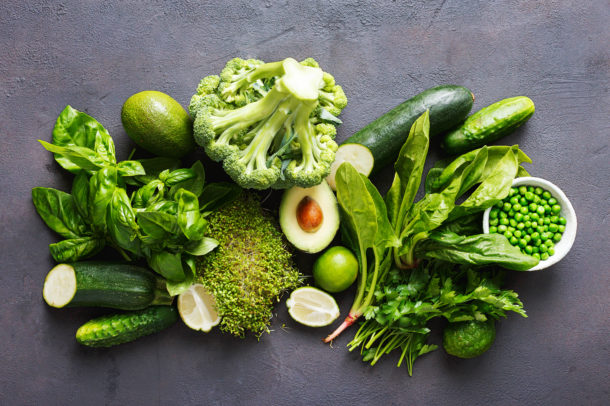Submitted by Nutrition Student Camille Lyu and Tanya Choy, RED, CDE
Every nutrition brochure you’ve probably seen suggests adding more fruits and vegetables to your plate, and there’s a reason for that. Fruits and vegetables add an abundance of micronutrients and fibre. They also support cardiovascular and gut health and make meals more visually appealing. But did you know that plant-based foods can have an added positive impact on our kidney health?
When our kidneys’ function is compromised, they work harder to balance the acidity of our body, which can potentially lead to a condition called metabolic acidosis.
Our bodies create acid when breaking down the organic sulphur in dietary protein and produce base (the chemical opposite of acid) when digesting fruits and vegetables. A diet high in protein, especially animal proteins, might cause our bodies to produce more acid than what our bodies can balance. This challenges the kidneys as they work to correct to normal levels. Your healthcare team will be checking your bicarbonate levels in your bloodwork to monitor your acid/base balance.
Sodium bicarbonate is often prescribed to help treat metabolic acidosis. However, some recent studies have explored how fruits and vegetables may be just as effective as sodium bicarbonate in mild metabolic acidosis. Not only are they rich in vitamins, minerals, fibre, and antioxidants, but they also avoid the load of sodium coming from sodium bicarbonate supplementation. Remember, it is essential to follow your care team’s recommendations regarding the use of sodium bicarbonate supplementation. Consult with your team about using fruit and vegetables to help with metabolic acidosis.
Here are five ways you can enjoy plant-based ingredients and make your diet more kidney-friendly:
- Try a new fruit or vegetable each time you go grocery shopping.
This is an easy and fun way to add variety to your diet and explore new flavours. Pick up a new type of produce every time you visit a grocery store and look up how to prepare them. *Avoid starfruit, as the substance found in starfruit can be harmful to people with kidney disease.
- Enjoy more plant-based proteins in place of animal proteins.
Replacing animal proteins with plant-based proteins in your meals can reduce the body’s acid load while also lowering the amount of saturated fat in your diet. So, try lentils in your Bolognese sauce instead of ground beef, or blend white beans into a soup to make it creamy, and instead of steak try marinated tofu. You can also reduce the amount of animal protein in a meal by including lentils or beans in rice or on top of a salad. Another bonus of replacing animal protein with plant-based protein is that it’s often more economical. If you’re unsure how much or the types of protein to choose, reach out to your dietitian; they will be happy to help you!
Explore these plant-based recipes from the Kidney Community Kitchen cookbook.
Recipes – Kidney Community Kitchen
- Transform your veggies.
Eating vegetables doesn’t just mean eating salads at every meal. There are many unexpected ways to add more veggies in your diet. You don’t like roasted cauliflower? Try making a creamy smoothie with frozen cauliflower instead. Don’t know what to do with zucchini? Try making zucchini bread or these delicious zucchini brownies.
Zucchini Brownies – Kidney Community Kitchen
- Herbs are also greens.
Not a big fan of kale? Well, you don’t have to be! Herbs such as basil, mint, cilantro, dill, and parsley are also considered “greens”, and they add extraordinary flavour to your meals. Try a fresh basil pesto recipe for your pasta, or chimichurri as a sauce, or try a refreshing tabouli salad. Adding fresh herbs to salad dressings is another great way to increase your veggie intake while seasoning your meal.
Fresh Basil Pesto with Pasta – Kidney Community Kitchen
Tarragon Dressing with Salad – Kidney Community Kitchen
- Making half of your plate fruits and vegetables.
As the Canada Food Guide suggests, try making half of your plate fruits and vegetables. This is a simple way to visualize and remind yourself to add more fruits and veggies to your diet.
Keeping everything in mind, it is important that you enjoy what you eat. There is no need to stress about making every meal perfect; the long-term diet pattern, day in and day out, matters more than a single meal. And if you need more guidance on what foods to eat to help with metabolic acidosis, talk to your dietitian. They will be able to help you regarding your specific needs and preferences
References:
Goraya, N., Munoz-Maldonado, Y., Simoni, J., & Wesson, D. E. (2021). Treatment of chronic kidney disease-related metabolic acidosis with fruits and vegetables compared to nahco3 yields more and better overall health outcomes and at comparable five-year cost. Journal of Renal Nutrition, 31(3), 239–247. https://doi.org/10.1053/j.jrn.2020.08.001 Scialla, J. J., & Anderson, C. A. M. (2013). Dietary acid load: A novel nutritional target in chronic kidney disease? Advances in Chronic Kidney Disease, 20(2), 141–149. https://doi.org/10.1053/j.ackd.2012.11.001
